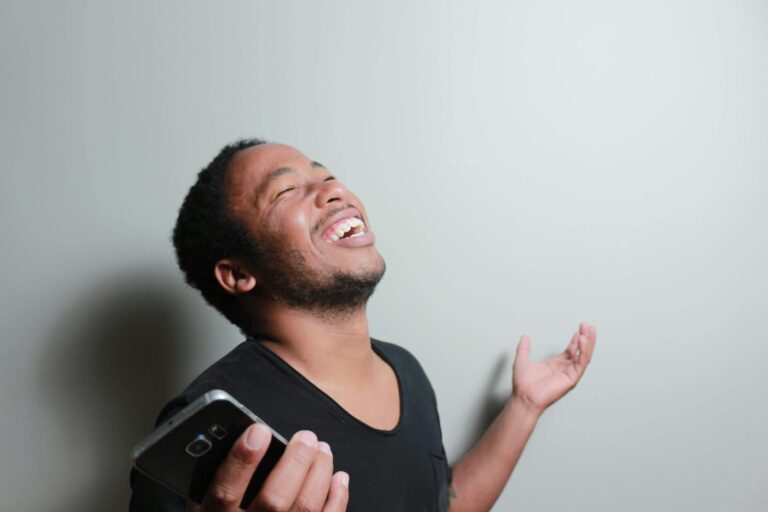I’ll be honest with you: writing about letting go of someone you love feels like trying to explain how to breathe underwater. It seems impossible until you realize that sometimes, holding your breath is what’s actually killing you.
After years of helping people navigate their most painful relationship decisions, I’ve learned something crucial: the hardest part isn’t loving someone wrong for you it’s admitting that love alone isn’t enough. Whether you’re dealing with a toxic partner, unrequited love, or someone who’s simply grown in a different direction, the pain cuts deep.
But here’s what I know from both professional experience and personal heartbreak: you can love someone deeply and still choose to walk away. In fact, sometimes that’s the most loving thing you can do for both of you.
How Do You Let Go Of Someone You Love?
Letting go starts with a decision, but it’s sustained by daily choices. You don’t wake up one morning and suddenly stop loving someone. Instead, you make the conscious choice to prioritize your well-being over your attachment to them.
The process looks like this:
- Acknowledging that the relationship isn’t serving you
- Making the conscious decision to prioritize your growth and happiness
- Taking concrete steps to create emotional and physical distance
- Building new patterns and connections that don’t revolve around them
- Learning to sit with the discomfort without running back to familiar pain
I’ve worked with clients who spent years trying to “get over” someone while still texting them daily, stalking their social media, and hoping things would magically change. Real letting go requires real action, not just wishful thinking.
The decision to let go isn’t a one-time event. You’ll make this choice repeatedly, when you want to call them, when you see something that reminds you of them, when you’re lonely at 2 AM. Each time you choose yourself instead of the familiar pain, you get stronger.
Why Is It So Hard To Let Go Of Someone You Love?
Our brains are literally wired to resist letting go of people we love. When you’re attached to someone, your brain creates neural pathways that associate them with safety, pleasure, and comfort. Breaking those pathways feels like going against your own survival instincts.
Here’s what makes it so difficult:
Fear of the unknown: The pain you know feels safer than the uncertainty of being without them. At least you know what to expect from your current situation, even if it hurts.
Sunk cost fallacy: You’ve invested so much time, emotion, and energy into this person that walking away feels like wasting everything you’ve put in.
Trauma bonding: If the relationship involved highs and lows, your brain might have formed an addiction to the emotional rollercoaster. The intermittent reinforcement makes the attachment even stronger.
Identity fusion: When someone becomes part of your identity, letting them go feels like losing yourself. You might not remember who you were before them.
I had a client who described it perfectly: “Letting go of him felt like trying to cut off my own arm. Even though the arm was infected and killing me, it was still my arm.”
The Signs You Need To Let Go Of Someone
Sometimes we’re so deep in the forest that we can’t see the trees. Here are the clear indicators that it’s time to walk away, even when your heart is screaming to stay.
1. You Have Outgrown Them
Growth is natural and healthy but growing apart isn’t always mutual. When you’ve evolved as a person, but your partner remains stuck in old patterns, the relationship becomes a constraint rather than a catalyst for your continued development.
This looks like:
- You have different goals and values now
- Your conversations feel surface-level because you can’t relate to each other’s perspectives
- You find yourself dumbing down your interests or ambitions to maintain a connection
- They actively discourage your growth or make you feel bad for changing
Growth incompatibility is real. It doesn’t make either person bad it just means you’re no longer compatible for the journey ahead.
2. You Can’t See A Future With Them
When you try to picture your future and they don’t fit into any realistic scenario, your subconscious is telling you something important. Maybe their values don’t align with the life you want to build, or their behavior patterns make a long-term commitment feel impossible.
I’ve worked with people who stayed in relationships for years despite knowing they didn’t want the same things. The sooner you honor this knowing, the less pain you’ll cause for everyone involved.
3. You Become Intolerant Of Certain Things They Do
What you used to find quirky or tolerable becomes unbearable. This isn’t about becoming pickier it’s about your needs and boundaries evolving while theirs stay static.
Warning signs:
- Their communication style consistently frustrates you
- Habits that never bothered you now feel disrespectful
- You find yourself constantly asking them to change basic aspects of who they are
- You feel like you’re parenting them instead of partnering with them
4. They Drain Your Energy
Healthy relationships should energize you more than they deplete you. If every interaction leaves you feeling exhausted, angry, or empty, that’s your nervous system telling you something crucial.
Energy drains include:
- Conversations that always center around their problems
- Having to manage their emotions constantly
- Walking on eggshells to avoid their reactions
- Giving support that’s never reciprocated
5. You Don’t Like The Person You Become Around Them
Pay attention to how you act when you’re with them versus when you’re not. If you’re more reactive, insecure, jealous, or mean-spirited around them, the dynamic is toxic regardless of how much you love each other.
I tell my clients: the right person brings out your best self, not your worst. If you consistently become someone you don’t recognize or respect around them, that’s a clear sign the relationship needs to end.
6. You Don’t Feel Safe Around Them
Safety isn’t just about physical harm. Emotional safety is equally important for healthy relationships. If you can’t be vulnerable, honest, or authentic without fear of their reaction, you’re not in a safe space.
Lack of safety looks like:
- Walking on eggshells around their moods
- Hiding parts of yourself to avoid conflict
- Feeling anxious when you see their name pop up on your phone
- Being afraid to disagree with them or set boundaries
15 Ways To Let Go Of Someone You Love And Move On
These strategies aren’t just theory; they’re practical steps I’ve seen work for hundreds of people going through exactly what you’re experiencing right now.
1. Disassociate Yourself
The first step is creating space between you and them, both mentally and physically. You can’t heal from someone you’re still emotionally enmeshed with every day.
Mental disassociation:
- Stop checking their social media (block them if necessary)
- Remove photos and mementos from your immediate environment
- Practice observing your thoughts about them without getting caught up in them
- Use mindfulness techniques to stay present instead of being lost in memories
Physical disassociation:
- Minimize or eliminate contact entirely
- Change your routines to avoid places you’re likely to see them
- Remove yourself from shared social circles temporarily if possible
- Create new environments that don’t hold memories of them
This isn’t about pretending they never existed it’s about giving yourself space to remember who you are without them.
2. Accept Your Pain
The fastest way through pain is feeling it fully, not avoiding it. When you resist or deny your grief, it gets stuck in your system and prolongs the healing process.
Accepting pain means:
- Allowing yourself to cry when you need to
- Acknowledging the loss without minimizing it
- Talking about your feelings instead of stuffing them down
- Understanding that grief is love with nowhere to go
I had a client who spent months trying to convince herself she was “fine” after a devastating breakup. Once she finally let herself feel the full weight of her loss, she was able to process it and move forward in ways that avoiding the pain never allowed.
Grief has its own timeline. Don’t rush yourself but also don’t set up camp in the pain permanently.
3. Be Optimistic
Optimism after heartbreak isn’t about toxic positivity it’s about believing that your future holds possibilities you can’t see yet. When you’re in pain, it’s easy to believe this is as good as it gets.
Healthy optimism includes:
- Trusting that you have the strength to build something better
- Believing that the right person is still out there for you
- Recognizing that this ending creates space for new beginnings
- Understanding that your capacity to love deeply is a gift, not a curse
The energy you’re investing in holding onto someone wrong for you could be redirected toward creating the life and relationships you actually want.
4. Talk To Others
Isolation amplifies pain and distorts your perspective. Talking to trusted friends, family members, or a therapist helps you process emotions and gain clarity about your situation.
Effective support looks like:
- Choosing people who will be honest with you, not just tell you what you want to hear
- Sharing your feelings without expecting others to fix your pain
- Asking for specific support (listening, advice, distraction) rather than hoping people will read your mind
- Setting boundaries with people who drain your energy or minimize your experience
Professional support through apps like BetterHelp or Talkspace can provide objective guidance when you’re too close to the situation to see clearly.
5. Engage In Self-Love
Self-love isn’t bubble baths and face masks (though those are nice too). It’s making choices that honor your long-term wellbeing over short-term comfort.
Practical self-love:
- Setting and maintaining boundaries, even when it’s uncomfortable
- Pursuing goals and interests that matter to you
- Taking care of your physical health through exercise, nutrition, and sleep
- Speaking to yourself with the same kindness you’d show a good friend
- Saying no to situations that compromise your values or energy
When you start treating yourself with the love and respect you were hoping to get from them, you realize you don’t need their validation to feel worthy.
6. Find Support Systems
You need people in your corner who understand what you’re going through and can offer different types of support depending on what you need in the moment.
Build a diverse support network:
- Friends who make you laugh and help you have fun
- Family members who provide unconditional love and stability
- Mentors or therapists who offer wisdom and perspective
- Support groups (online or in-person) with people facing similar challenges
Apps like Meetup can help you find local support groups or activities where you can connect with like-minded people who share your interests.
7. Don’t Dwell On Your Partner Anymore
There’s a difference between processing your emotions and ruminating endlessly. Processing helps you heal and learn. Ruminating keeps you stuck in the pain.
Stop the rumination cycle by:
- Setting a timer when you catch yourself thinking about them (15 minutes max)
- Redirecting your attention to present-moment activities
- Writing down your thoughts instead of cycling through them mentally
- Asking yourself, “Is thinking about this helping me move forward or keeping me stuck?”
Challenge the stories you tell yourself about what you lost. Often, we romanticize relationships after they end and forget the very real reasons we needed to leave.
8. Reconnect With Your Values
Long-term relationships can blur your individual identity. Reconnecting with your core values helps you remember who you are outside of that partnership.
Value clarification exercises:
- List the principles that matter most to you
- Identify how the relationship supported or contradicted these values
- Make decisions based on your values rather than your emotions
- Seek relationships and opportunities that align with who you’re becoming
When you’re clear on your values, it becomes easier to recognize when someone isn’t aligned with the life you want to create.
9. Think Of How Much You Can Take
Everyone has limits, and recognizing yours isn’t weakness – it’s self-preservation. You don’t have to wait until you’re completely broken to justify leaving.
Honest self-assessment:
- What behaviors or patterns are you willing to tolerate?
- How much energy do you want to invest in trying to change someone else?
- What would need to change for you to feel genuinely happy in this relationship?
- Are those changes realistic, given the person’s track record?
You’re not responsible for loving someone into becoming who you need them to be. That’s their job.
10. Ask The Question WHY
Getting clear on your “why” for leaving gives you strength when the process gets difficult. Write down your reasons and refer back to them when you feel tempted to go back.
Important “why” questions:
- Why is this relationship no longer serving your growth?
- Why do you deserve better than what you’re currently experiencing?
- Why is staying more painful than leaving?
- Why would future you thank present you for this difficult choice?
Your “why” needs to be stronger than your attachment to the familiar pain of staying.
11. Meet New People
Expanding your social circle reminds you that there are amazing people in the world who might be better matches for who you’re becoming.
This doesn’t mean rushing into dating it means opening yourself to new friendships, experiences, and perspectives that can help you heal and grow.
Ways to meet new people:
- Join clubs or groups related to your interests
- Take classes or workshops to learn new skills
- Volunteer for causes you care about
- Use apps like Bumble BFF to find platonic friendships
12. Accept There Are Others
The scarcity mindset keeps you trapped in relationships that don’t serve you. When you believe deep down that other people could love and appreciate you, leaving becomes less terrifying.
This isn’t about replacing them immediately it’s about trusting that your capacity to love and be loved isn’t limited to one person who happens to be wrong for you.
Abundance mindset shifts:
- Recognizing that love isn’t a finite resource
- Understanding that compatibility matters as much as chemistry
- Believing you deserve someone who chooses you consistently
- Trusting that the right person won’t require you to sacrifice your well-being
13. Show Self-Respect
Self-respect means making choices that honor your worth, even when those choices are painful or difficult.
Self-respect in action:
- Not begging someone to stay who wants to leave
- Refusing to accept breadcrumbs of affection from someone who gave you their whole heart before
- Maintaining your dignity even when you’re heartbroken
- Choosing your long-term happiness over short-term comfort
The way you treat yourself teaches others how to treat you. If you don’t respect your own boundaries and needs, why would they?
14. Take All The Time In The World
Healing isn’t a race, and there’s no prize for getting over someone quickly. Permit yourself to move at your own pace without judgment or comparison.
Taking your time means:
- Not rushing into rebound relationships to avoid the pain
- Allowing yourself to feel sad, angry, or confused without trying to fix it immediately
- Being patient with the nonlinear nature of grief and healing
- Focusing on your own process instead of comparing it to others’
Some days will be harder than others, and that’s completely normal. Healing happens in waves, not in straight lines.
15. Learn From The Relationship
Every relationship teaches you something valuable, even the ones that end in heartbreak. Extracting those lessons helps you make better choices in the future.
Important reflection questions:
- What did this relationship teach you about your needs and boundaries?
- What patterns do you want to change in future relationships?
- How did you contribute to the relationship’s problems, and how can you grow from that?
- What are you grateful for from this experience, even though it ended?
Learning from the relationship doesn’t mean taking all the blame – it means taking responsibility for your part so you can make different choices going forward.
Letting Go Of Someone You Love Messages
Sometimes you need to communicate your decision clearly and kindly. Here are templates that maintain dignity while creating closure:
For ending a relationship: “I’ve done a lot of thinking, and I’ve realized we want different things for our futures. I care about you deeply, but I think we both deserve to be with someone excited about the same kind of life we are.”
For setting boundaries with an ex: “I need some space to process everything that happened between us. I’m not ready to be friends right now, and I hope you can understand that this is what I need to heal.”
For letting go of unrequited love: “I realize I’ve been holding onto hope for something that isn’t going to happen. I need to step back and focus on moving forward. I wish you all the best.”
For acknowledging mutual growth: “We’ve both changed so much since we first got together. I think we need to accept that we’re not the same people we were, and that’s okay. Thank you for all the good times.”
For expressing gratitude despite the pain: “Even though this didn’t work out the way either of us hoped, I’m grateful for what we shared. I learned a lot about myself through loving you.”
The key is being honest, kind, and clear about your intentions. Don’t leave room for misinterpretation if you’re truly done.
The Psychology Behind Letting Go
Understanding what happens in your brain and body when you’re trying to let go can help normalize the difficulty of the process and give you strategies for working with your nervous system instead of against it.
Attachment and the Nervous System
When you’re attached to someone, your nervous system learns to regulate through connection with them. Their presence calms your system, while their absence triggers stress responses. This is why no-contact feels so physically uncomfortable at first.
Your nervous system needs time to learn new patterns of regulation that don’t depend on them. Self-soothing techniques, regular exercise, and consistent social connections help retrain your system.
The Addiction Model of Love
Romantic attachment activates the same brain circuits as addiction. The person you love becomes associated with dopamine release, making their withdrawal feel similar to drug withdrawal.
This explains why:
- You crave contact with them even when you know it’s bad for you
- You experience physical symptoms like anxiety, insomnia, and loss of appetite
- You rationalize staying in touch “just as friends”
- You have obsessive thoughts about them
Understanding this as a biological process rather than a moral failing can help you be more compassionate with yourself as you heal.
Trauma Bonding
If the relationship involved cycles of conflict and reconciliation, you might have developed a trauma bond that makes letting go especially difficult.
Trauma bonding occurs when:
- Intense negative experiences are followed by relief or affection
- You feel like you need to “earn” their love through your behavior
- The relationship involves high highs and low lows
- You feel more attached after fights or crises
Breaking trauma bonds requires professional help in many cases. Consider working with a trauma-informed therapist who understands these dynamics.
When Professional Help is Needed
Some situations require more support than friends and self-help can provide. Don’t hesitate to seek professional help if you’re experiencing:
Signs You Need Professional Support
- Thoughts of self-harm or suicide
- Inability to function in daily life for extended periods
- Substance abuse as a coping mechanism
- Obsessive or stalking behaviors toward your ex
- Repeated patterns of toxic relationships
- Trauma symptoms like panic attacks, dissociation, or severe anxiety
Types of Professional Help
- Individual therapy for processing grief and developing coping skills
- Support groups for people dealing with similar relationship challenges
- Trauma therapy if the relationship involved abuse or trauma bonding
- Couples therapy if you’re trying to work things out (though this isn’t always appropriate)
Resources like Psychology Today help you find qualified therapists who specialize in relationship issues and attachment trauma.
Building Your New Life
Letting go isn’t just about ending something – it’s about creating space for something better. Here’s how to intentionally build a life that doesn’t revolve around someone else.
Rediscovering Your Identity
Spend time figuring out who you are outside of relationships. What did you enjoy before you met them? What dreams did you put on hold? What aspects of yourself got lost in trying to make the relationship work?
Creating New Routines
Establish daily and weekly routines that bring you joy and stability. Structure helps when everything feels chaotic, and new routines create new neural pathways that don’t involve them.
Setting Goals
Having something to work toward gives you purpose and direction beyond the relationship. Whether it’s career goals, health goals, or creative projects, invest your energy in building something meaningful.
Practicing Gratitude
Regularly acknowledging what’s good in your life helps rewire your brain to notice positive experiences instead of just focusing on what you’ve lost.
Gratitude apps like Five Minute Journal can help establish this practice even when you don’t feel naturally grateful.
The Long-Term Benefits of Letting Go
When you successfully let go of someone who isn’t right for you, you create space for relationships and experiences that truly align with who you’re becoming.
Increased Self-Awareness
The process of letting go teaches you about your needs, boundaries, and values in ways that staying comfortable never could. This self-knowledge makes all your future relationships healthier.
Stronger Boundaries
Learning to prioritize your well-being over attachment develops your boundary-setting skills, which serve you in all areas of life.
Greater Emotional Resilience
Surviving heartbreak and choosing yourself anyway builds confidence in your ability to handle difficult emotions and make hard choices.
Room for the Right Person
Most importantly, letting go of someone wrong for you creates space for someone who’s actually compatible with who you are and who you’re becoming.
Common Mistakes to Avoid
These mistakes can prolong your healing process or pull you back into unhealthy patterns:
Staying Friends Too Soon
You can’t be genuine friends with someone you’re still romantically attached to. Friendship might be possible eventually, but not while you’re still healing from the romantic loss.
Using Dating as Avoidance
Jumping into new relationships to avoid feeling the pain of loss often leads to hurting innocent people or repeating unhealthy patterns.
Social Media Stalking
Monitoring their social media keeps you emotionally connected and prevents you from moving forward. Block or unfollow them until you’re genuinely healed.
Making Them the Villain
While it’s important to acknowledge harmful behavior, turning your ex into a monster prevents you from learning from the experience and often indicates unprocessed pain.
Waiting for Closure
Closure comes from within, not from them. Waiting for them to provide closure keeps you emotionally dependent on someone you’re trying to let go of.
Final Thoughts
Letting go of someone you love is one of life’s most difficult challenges, but it’s also one of the most important skills you can develop. It requires courage, self-compassion, and the belief that you deserve relationships that enhance your life rather than drain it.
Learn how to let go of someone you love with acceptance, self-compassion, and strength to heal and move forward.
Pin for Later!







